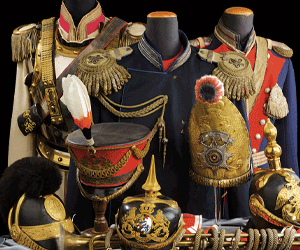Reichsbahn 1941 Pattern Salary Groups 1-5 Collar Tabs
SKU: 72.GOR.03.02.02.01.05.002
Estimated market value:

Estimated market value:
Attributes
History
The Deutsche Reichsbahn (German National Railway) was created after the First World War in 1920 by combining the formerly independent state railways of the abolished German Empire into a national organisation. Under NSDAP rule, the German state railway system was reorganised in the 1930s to better meet the needs of the economy and to prepare for war, eventually supplying the front lines with soldiers and supplies. The Reichsbahn also had an infamous role to play in the Holocaust, transporting Jews and other “undesirables” to concentration and extermination camps.
The Bahnschutzpolizei (railway protection police) was founded in 1939 as a merger of the Bahnpolizei (railway police) and the Reichsbahnschutz (railway protection force), the latter being regular railway employees that, beyond their normal functions, additionally served as railway security personnel.
The Bahnschutzpolizei as a railway sub-organisation was made up of policemen that were employed by the Reichsbahn rather than the German police force. Their task was to ensure railway safety as well as preventing railway-related espionage and sabotage. During the war, most members of the Bahnschutzpolizei served in the occupied Eastern European territories.
A new design for collar tabs was introduced in February of 1941. The tabs are still in the form of parallelograms (wider than high) for the tunic worn closed at the neck and rectangular (higher than wide) for the tunic worn open at the neck. They feature a black cloth underlay with gold-coloured cyphers, either made of metal or embroidered. It is not uncommon for the metal cyphers to have lost their gilding over time and appear silver-coloured. All collar tabs feature a winged wheel at the top, the wheel viewed from the front and a wing attached on each side, as well as a mobile swastika below. Depending on the wearer’s pay group, the tabs could feature an additional oak leaf pattern.
Pay groups 1-5 collar tabs featured golden-yellow piping and initially twelve oak leaves, but this was changed to eight oak leaves in July of 1941.
Salary groups 1-5 collar tabs feature golden-yellow piping.
Pay groups 6-7 collar tabs feature golden-yellow piping and four oak leaves.
Pay groups 7a-11 collar tabs feature alternating golden-yellow and black piping, as well as two oak leaves.
Pay groups 12-17a and salary groups 6-7 collar tabs feature alternating golden-yellow and black piping.
Collar tabs for workers without the status of civil servants as well as civil servant candidates feature no piping.


Comments
Sign in to comment and reply.


Scroll Top